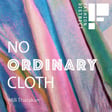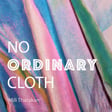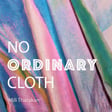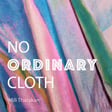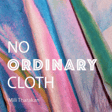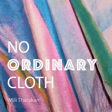
Ep 25. Turning Agri Waste to Cellulose Fibre, High-Tech Naturalism and the Making of a Fashion Scientist with Amanda Parkes
In this episode, host Mili Tharakan, dives deep into the extraordinary mind and career of Amanda Parkes—a true pioneer at the intersection of science, fashion, and engineering. Amanda has consistently challenged boundaries and redefined what’s possible in textiles and sustainability.
Amanda Parkes is a renowned fashion scientist with more than 20 years of experience pioneering innovation, sustainability, and smart materials across the fashion and technology sectors. As founding scientist and Chief Innovation Officer at Pangaia, she led the creation of market-first, sustainable materials, helping to earn the brand a top spot on Fast Company’s Most Innovative Brands list. She holds a PhD and MS from the MIT Media Lab and degrees in Mechanical Engineering and Art History from Stanford. As an Advisor at Regeneration VC Amanda also advises leading climate tech and biomaterials startups and is an internationally recognised speaker, honoured by the Business of Fashion and Vanity Fair for her influential work shaping the industry.
In this episode they explore Amanda's latest venture - Mothership Materials, where she is translating cutting-edge molecular separation technology to turn waste into valuable ingredients for the next generation of textiles and glucose for microbes. Amanda's insights offer a hopeful and innovative vision for the future of the textile industry.
Key takeaways from this episode include the potential of waste valorisation in creating sustainable textiles, the importance of interdisciplinary approaches, and the need for robust business models in sustainable fashion.
00:00 Introduction to the No Ordinary Cloth Podcast
00:43 Meet Amanda Parkes: A Pioneer in Sustainable Textiles
05:52 Defining the Role of a Fashion Scientist
13:53 Amanda's New Venture: Mothership Materials
36:03 Navigating Interdisciplinary Skills and Innovation Diplomacy
43:44 Challenges and Strategies in Scaling Sustainable Technologies
51:53 Insights from Leading Innovation at Pangaia
01:09:40 Future of Emerging Textile Technologies
01:10:33 AI in Textile Innovation
01:11:18 Regeneration VC Fund's Mission
01:12:50 Challenges in Impact Measurement
01:15:12 Investment Nervousness in Fashion Startups
01:18:43 Career Path and Advice for Young Professionals
01:42:22 Conclusion and Final Thoughts
🎧 Recommended Listening:
Ep 15. Brewing Beer for Bio Leather
Ep 2. From Garden Waste to Leather
Ep 16. Catalyst Shaping the Future of Sustainable and Ethical Fashion
Connect with me
Mili Tharakan: Linkedin I Insta I Buy me a coffee I Email
❤️ Subscribe and leave a review, I love to hear your feedback
Cover art: Photo by Siora, Photography on Unsplash
Music: Inspired Ambient, Orchestraman
